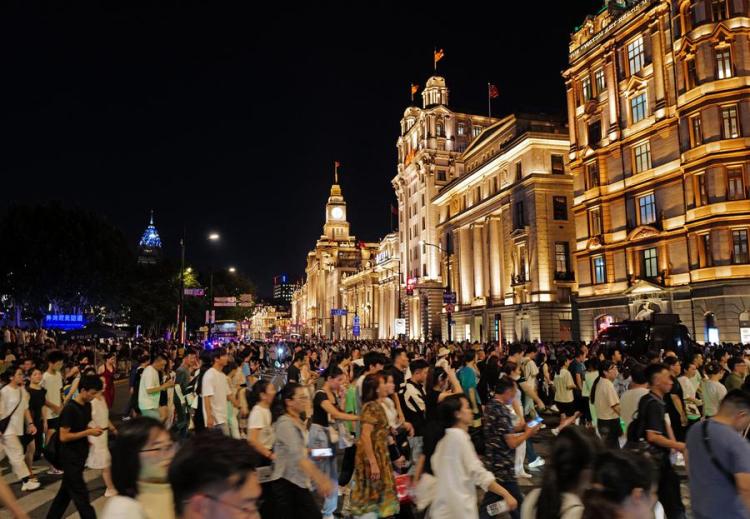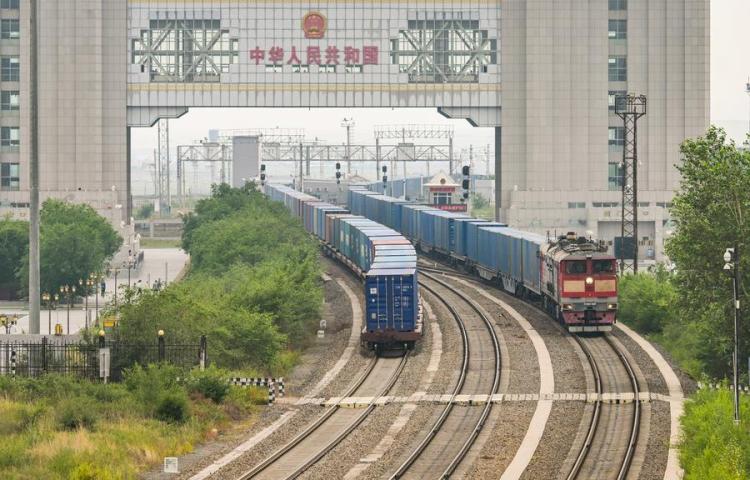How did China achieve such remarkable modernization?
China has shattered Western dominance in certain sports during the Summer Olympics in Paris this year. The impressive results achieved by Chinese athletes are a reflection of Chinese modernization, said Wang Yiwei, professor of the School of International Studies at the Renmin University of China.

Why has China experienced such rapid growth? How did China achieve such remarkable modernization?
According to Wang Yiwei, professor of the School of International Studies at the Renmin University of China, Chinese modernization has not only broadened the pathways for developing countries to achieve their own modernization goals but has also presented a unique option in humanity's pursuit of an improved system of social and economic governance.
"China has the will and the ability to lead and is ready to share," Wang said.
BREAKING WESTERN MONOPOLY
During a recent interview with Xinhua, Wang emphasized that China has shattered Western dominance in certain sports during the Summer Olympics in Paris this year. The impressive results achieved by Chinese athletes are a reflection of Chinese modernization.
China endeavors to achieve modernization for its vast population of over 1.4 billion people, surpassing the combined population of all developed countries worldwide.
According to Wang, the Communist Party of China (CPC) has successfully transformed China into a prosperous society in all respects. He further emphasized that China's achievements have challenged the resource monopoly and technological blockade imposed by certain Western countries.
"The American playbook is centered around utilizing trade, technology, financial and military policies to advance its own interests while containing other countries. This approach is hegemonic in nature and ultimately unsustainable," stated Wang.
In the late 1980s, measures were implemented to curb the rapid growth of Japan, an American ally, as Japan's industrial competitiveness began to surpass that of the United States. The United States forced Japan to agree to "voluntary" export restraints and an overvalued Yen. Thus, Japan's economic growth plummeted and entered a prolonged financial crisis.
"China need not and will not sit idly by as the United States implements trade and technology policies to impede China's economic growth. Such containment measures will only serve to further strengthen China," said Wang, highlighting that China's path to modernization presents a viable alternative for developing countries, particularly those in the Global South.
SHARING EXPERIENCES
Wang emphasized that the Chinese development model is not solely applicable to China; its experiences can be effectively applied in other parts of the world through initiatives like the Belt and Road Initiative (BRI).
The BRI has brought tangible benefits to the people of participating countries and has gained widespread recognition from the international community. For instance, many African countries have built their first highways, sea bridges and industrial parks thanks to the BRI. Land-locked countries such as Laos and Kazakhstan have overcome their geographical limitations and achieved connectivity by expanding their transportation networks.

The BRI has evolved into a platform for building a community with a shared future for humanity through diverse and high-quality cooperation. Since its inception over a decade ago, China has signed more than 200 cooperation agreements with over 150 countries and over 30 international organizations.
As the Chinese saying goes, "If you want to get rich, build roads first." Wang stated, "There is still great potential for BRI projects globally, as the current capacity remains underutilized."
China also shares its experiences through educational exchanges and vocational skills training. "There is no one-size-fits-all model, and countries can find a development path suitable to their national conditions by learning from China's experiences."
SUSTAINABLE DEVELOPMENT
Chinese modernization aims to promote green and low-carbon modes of production and living while prioritizing high-quality development with the support of a healthy environment.
Stressing that China has successfully carved out its own path of modernization, distinct from that of the West, Wang highlighted China's notable achievements in ecological and green development, which have garnered global recognition.
"China's great advances in new energy vehicles, in producing lithium batteries are creating opportunities not only for countries like Nicaragua but the world as a whole," said Michael Campbell, Nicaragua's ambassador to China, during a recent launching ceremony of a think tank report on the achievements and contributions of China's reform.
As China transitions to high-quality development, its "new three" industries, electric vehicles, lithium batteries, and photovoltaic products, are highly sought after globally. Campbell added that they support countries in achieving a low-carbon transformation and sustainable development while fostering global economic growth.
Since ancient times, the Chinese have regarded humans and nature as interconnected entities, recognizing that human happiness is closely intertwined with the well-being of nature. In contemporary China, protecting the environment has evolved from ancient wisdom to an unwavering modern reality.
"I think China's great success in ecological protection in recent years also shows that environmental issues are not merely political," Wang said, "but are deeply intertwined with human life itself."
